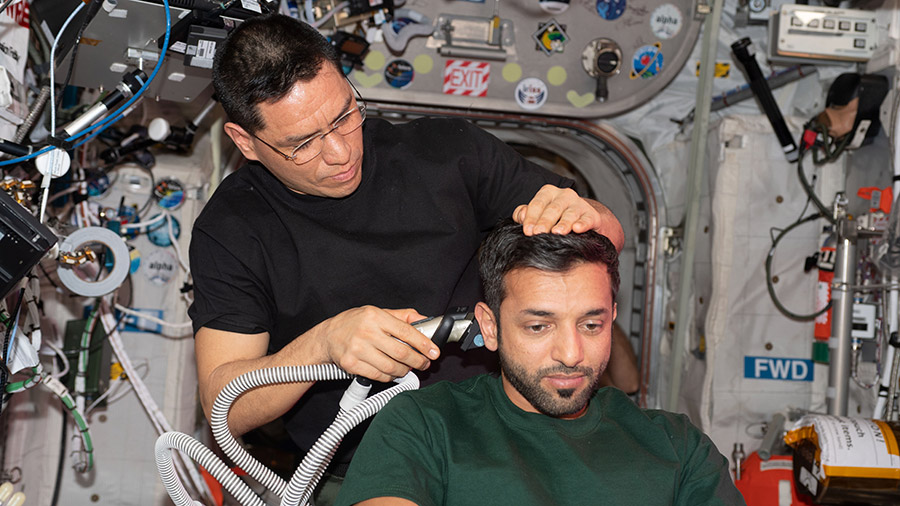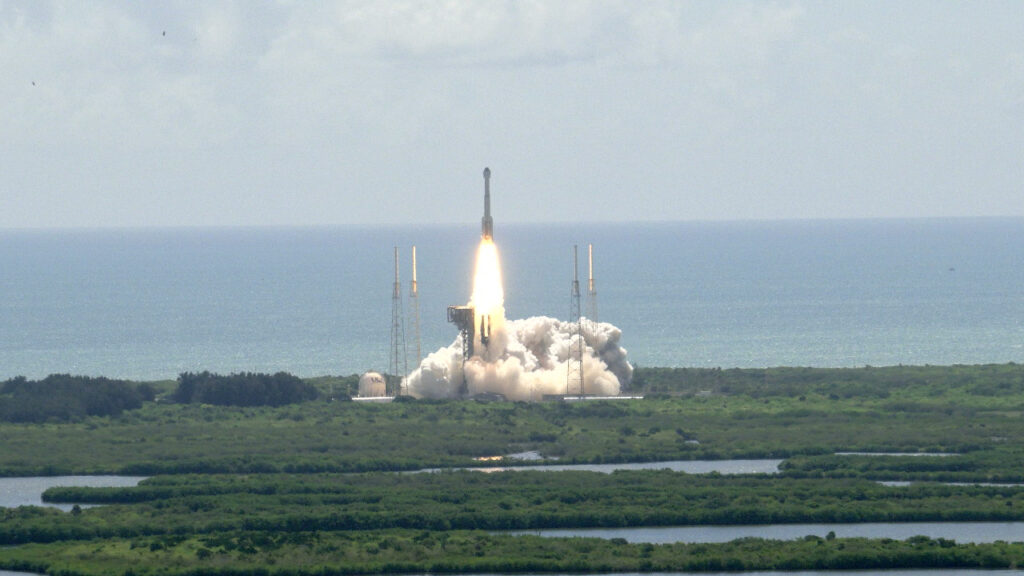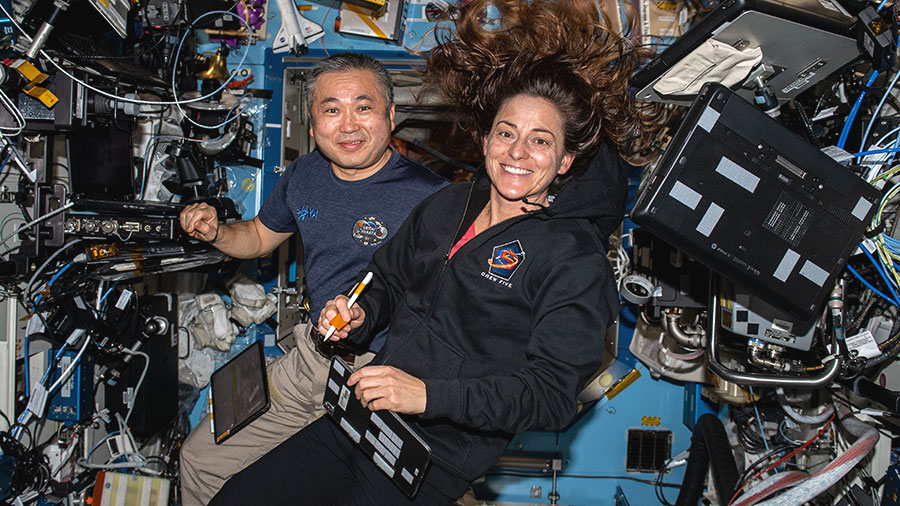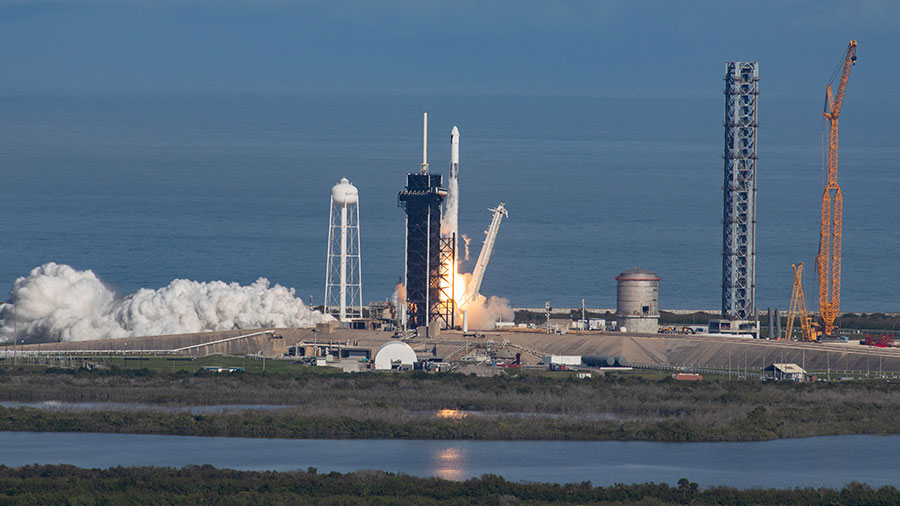
Human research activities dominated the Expedition 69 crew’s schedule aboard the International Space Station on Tuesday with ultrasound scans, vision checks, and hearing exams. Space physics also rounded out the science schedule while the orbital residents also continued ongoing cargo and maintenance operations.
Living long-term in weightlessness is suspected of increasing cardiovascular health risks such as aging-like symptoms in blood vessels observed in astronauts on previous missions. Researchers regularly evaluate the health of station crew members to gain insights into space-caused and Earth-bound heart conditions. NASA Flight Engineer Stephen Bowen contributed to that research on Tuesday attaching electrodes to himself and marking his neck, leg, and heart veins for the Vascular Echo investigation. He then scanned his veins using an ultrasound device and measured his blood pressure with inputs from doctors on the ground.
Bowen then swapped roles as Crew Medical Officer with flight engineers Frank Rubio of NASA and Dmitri Petelin of Roscosmos for eye checks during the afternoon. The trio took turns imaging the eyes of fellow crewmates Woody Hoburg of NASA, Sultan Alneyadi of UAE (United Arab Emirates), and Sergey Prokopyev of Roscosmos using standard medical imaging gear found in an optometrist’s office on Earth. Additionally, Prokopyev, who is also commander of the orbiting lab, and Petelin participated in a hearing test to evaluate the condition of their ear drums.
Space physics is also a key research topic as scientists and engineers learn how Earth-created materials react to the microgravity environment under a variety of conditions. Observations may advance the design and safety of spacecraft and space habitats as well as improve a host of ground-based industries and products.
Rubio and Hoburg worked on a pair of different physics experiments on Tuesday, one exploring extreme temperatures and the other foams and emulsions. Rubio serviced samples inside the Electrostatic Levitation Furnace, a research device that safely investigates the thermophysical properties of high temperature phenomena using a containerless, levitation technique. Hoburg studied the dispersion of bubbles and droplets in liquids for the Foams and Emulsions experiment using a specialized microscope that uses fluorescence imagery analysis.
Alneyadi focused mainly on cargo work continuing to offload some of the 6,200 pounds of new science experiments, crew supplies, and station hardware delivered March 16 aboard the SpaceX Dragon resupply ship. Roscosmos Flight Engineer Andrey Fedyaev worked on life support maintenance before supporting Petelin during a cardiac research study.
Learn more about station activities by following the space station blog, @space_station and @ISS_Research on Twitter, as well as the ISS Facebook and ISS Instagram accounts.
Get weekly video highlights at: https://roundupreads.jsc.nasa.gov/videupdate/
Get the latest from NASA delivered every week. Subscribe here: www.nasa.gov/subscribe




